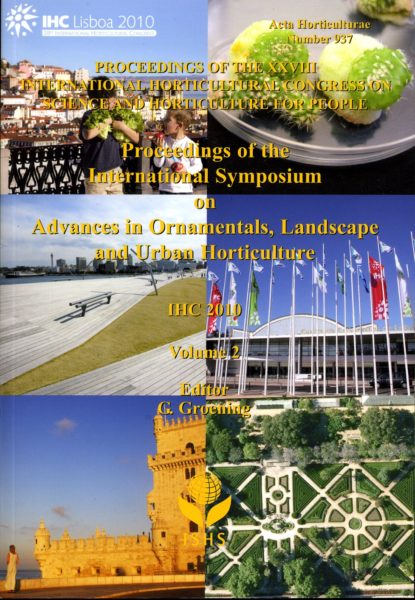The gardens of the Alhambra and the Generalife (Granada,Spain) present several hundred years old specimens of a very rare type of Myrtus. They are characterised by crowded, large leaves frequently arranged in trimerous whorls. The morphology of these myrtles proves to be peculiar and clearly sets the samples found in Granada’s different from both wild specimens and other commonly cultivated forms. Compared studies reveal that this was the main type of myrtle used during the Middle Ages in the Islamic gardens of theIberian Peninsula. Knowledge of this plant and its use has been lost in Europe since the Renaissance until the present day.
However it is still grown in the U.S. and Morocco In this article we analyse the identity of these plants; describe the importance of their use in the medieval gardens of al-Andalus; investigate the cultivation and knowledge of myrtle in classical, Medieval-Islamic and modern times; localise the plant’s distribution and identify the possible routes of its dispersal from the Mediterranean to Northern Europe, America and South Africa. Knowledge of the plant’s historical importance can be used to reintroduce it in Europe and encourage cultivation in theU.S.This paper presents the results of the research project “Estudio Botánico e historiográfico de Myrtus en la Alhambra y Generalife”, supported by the Patronato de la Alhambra y Generalife and the Junta de Andalucía, which the authors are working on.
To learn more: The Moorish Myrtle Acta horticulturae
In: Proceedings. XXVIIIth International Horticultural Congress – International Symposium on Advances. In Ornamentals Landscape & Urban Hort. / Ed.: G. Groening. –Acta Hort. 937, ISHS 2012 . — pp.1237 -1250
Manuel Casares Porcel, José Tito Rojo2 and M. de los Reyes González-Tejero García
Department of Botany, Faculty of Pharmacy, University of Granada, Spain. Botanical Garden of the University of Granada.
This post is available in: English Español

